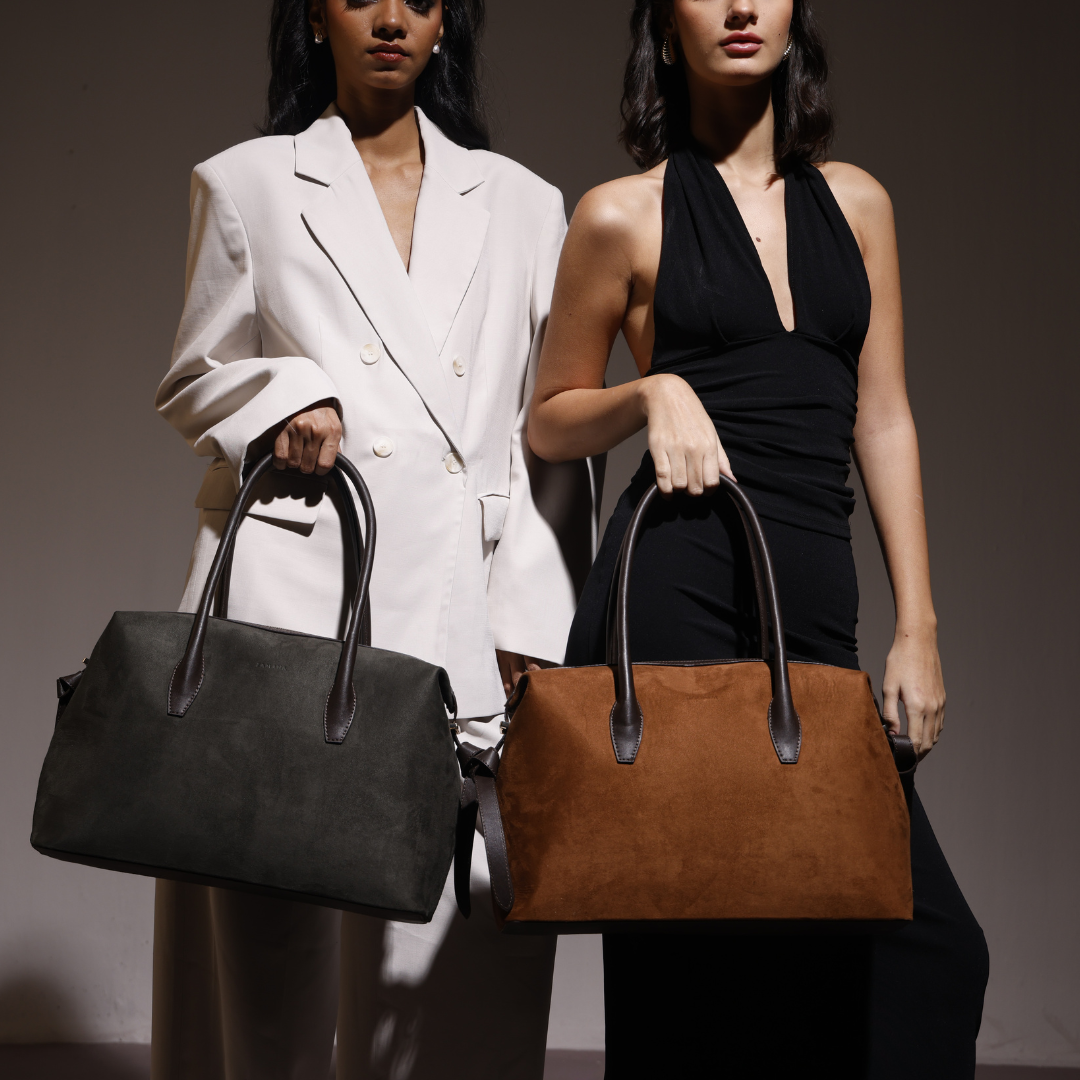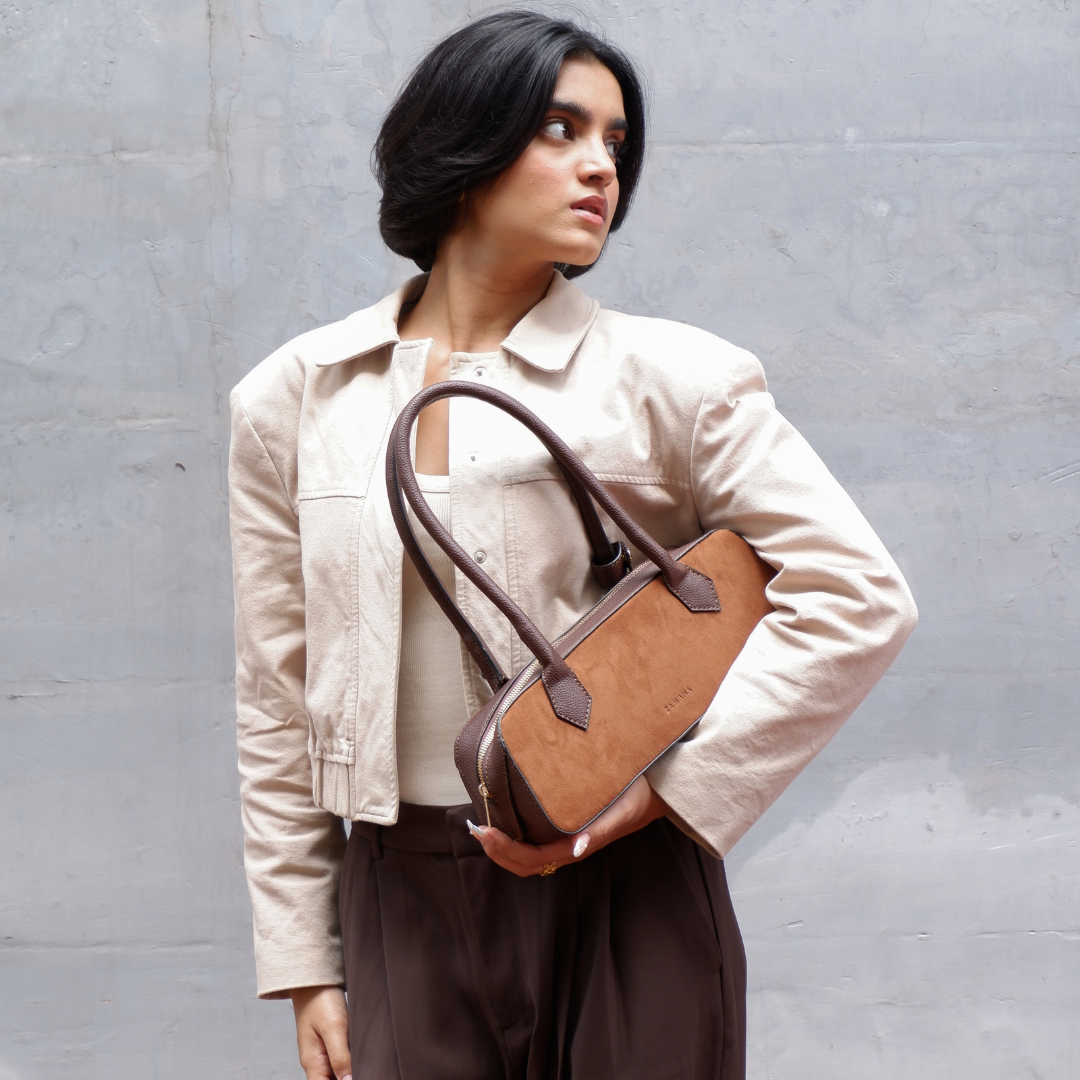Handbag Materials 101: Leather, Vegan, Canvas & More (Which One to Choose?)
Picking a handbag isn’t just about the shape, colour, or style; it’s about what it’s made of. The materials of the handbag determine it all: how long it will last, how it will age, how it will feel to carry, and even how much you will have to do to take care of it.
When you ever loved a bag and then it lost its shape or peeled off prematurely, there is a likelihood that it was the material that led to the damage. So, we should ensure that does not happen again. This is your easy-to-follow list of the most popular types of handbag fabric, to ensure that your next favourite is confidently chosen.
Why Handbag Materials Matter
The selection of material is not just a question of durability. It's about:
Durability - will it last through the various seasons?
Functionality - Does it have the capacity to carry your daily essentials without sagging?
Weight & Comfort - Does it always remain light on your shoulder, or does it get heavy soon?
Maintenance - Does it require delicate maintenance, or can it take everyday wear and tear?
Sustainability - Do you care about whether it is eco-friendly or animal-free?
The best material to use in handbags depends on your lifestyle, and this is where knowing what you have is important.
Handbag Material List with Pictures
The following is a brief overview of the most popular handbag materials and their performance in real life.
Genuine Leather
Pros of Leather:
-
Highly resilient and durable materials can have a life span of decades.
-
Acquires an intense patina throughout the years, due to which it ages beautifully.
-
Wear and tear are not easily worn out.
-
Strong enough to support more weighty objects, and it does not deform.
Cons of Leather:
-
Costly in comparison with other materials.
-
Needs frequent care and conditioning in order not to dry or crack.
-
Not vegan or cruelty-free
Where you'll see it:
The classic structured bags, such as She Means Business by Zamana Bags, adopt leather-inspired finishes that are durable and polished without being too bulky.
Vegan (PU / Faux Leather)
Pros of Vegan Leather:
-
Vegetarian and greener than leather made of animals.
-
Easy to carry, but has a smooth, leather appearance.
-
Offered in diverse textures, colours and finishes.
-
Cheaper than authentic leather.
Cons of Vegan Leather:
-
Not as durable as genuine leather.
-
Breaks or peels when not kept in the right way.
-
Not as breathable
Where you'll see it:
Glossy, statement pieces such as Kesha in Black or Candy in Vanilla at Zamana are designed and made of premium PU, which resembles the appearance of leather but remains featherlight.
Canvas
Pros of Canvas:
-
Lightweight yet strong.
-
Very affordable
-
Easy to clean and maintain
-
Flexible and breathable to use on a daily basis.
Cons of Canvas:
-
Not so formal or structured as leather.
-
Prone to being stained when handled haphazardly.
-
Prone to absorbing moisture.
Where you'll see it:
Casual, carefree fashions such as the Mini Duffle in Blueberry incorporate canvas-like PU mixes to provide that loose fit without becoming sloppy.
Suede (Natural or Faux)
Pros of Suede:
Luxury softness, smoothness.
Neutral colours are made deeper by their rich appearance.
Lightweight and flexible
Cons of Suede:
It must be given a special stain to prevent stains or water damage.
Can scuff or exhibit marks frequently.
Not structured as smooth leather.
Where you'll see it:
The suede-finished PU on soft-structured silhouettes, such as the Mini Duffle in Caramel, lend that sun-worn quality with added durability.
Woven / Gingham Textured Faux Leather.
Pros of Woven Faux Leather:
Tactile, unique surface provides visual appeal.
Fabric is less organised.
Easy to wipe clean
Lightweight and stylish
Cons of Woven Faux Leather:
It is not as durable as smooth leather.
Less flexible
It should be stored carefully to prevent dents.
Where you'll see it:
Practical and refined bags such as the Noore in Grey are playful in texture with a structured top-handle.
Takeaway
No one material is the best to use on handbags; it depends on how you intend to use your bag and how much effort you are willing to put into it. Leather or high-end vegan materials will be the right choice to make.
When you need everyday casual wear, then canvas, nylon, or suede-finish PU is your best bet. Woven or patterned faux leathers should be chosen if you would like texture and trend. When you know better what you are putting in your bag, you will have more knowledge on how to shop better and enjoy your bag more.
All Questions Answered: Handbag Material
Which type of material is good for handbags?
Structures and long-term wear are best made of leather and high-quality vegan (PU), whereas casual, lightweight styles work well with canvas and suede.
What is the raw material of handbags?
Handbags are manufactured using leather, faux leather (PU), canvas, nylon, polyester, suede and sometimes natural fabrics such as jute or cotton mixtures.
Which handbag material is most durable for daily use?
True leather is the most pleasing in terms of long-term durability, whereas high-quality PU and covered canvas are the best in terms of day-to-day use.
What handbag materials are eco-friendly and sustainable?
Plant-based or recycled PU leather (vegan), canvas made of organic cotton, and recycled nylon are more sustainable options than regular leather.




